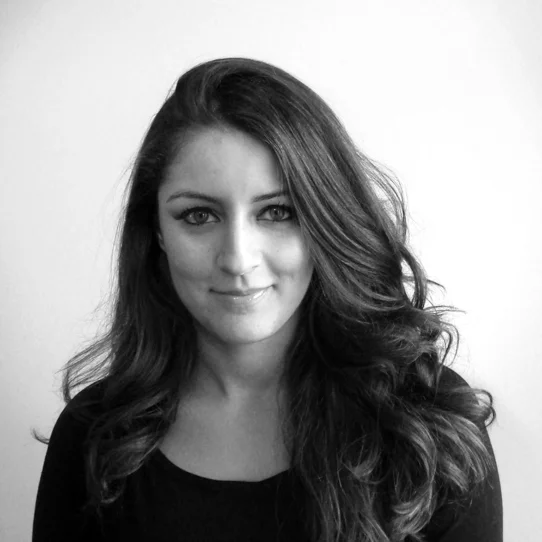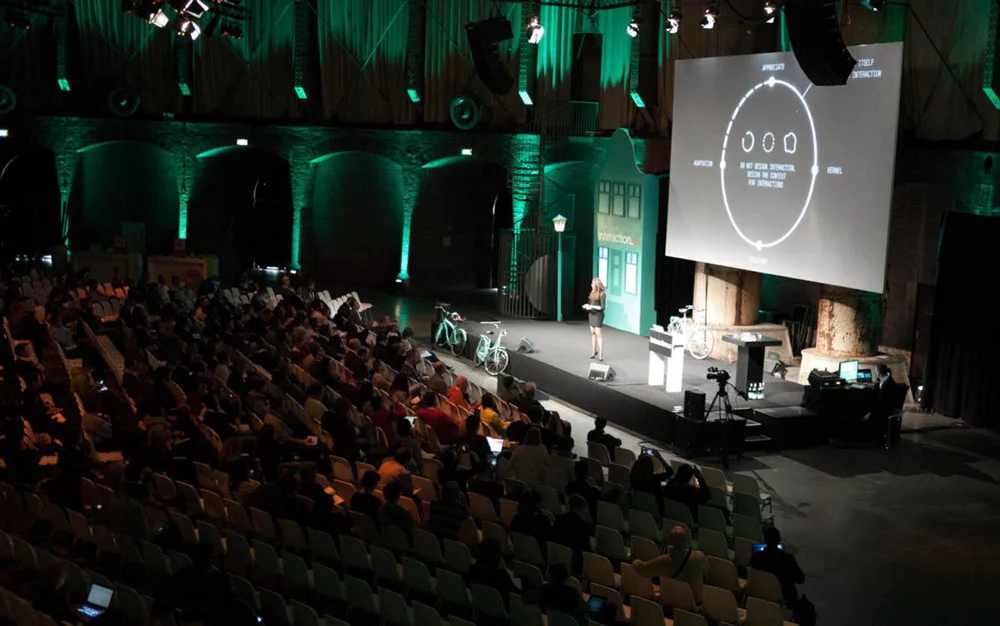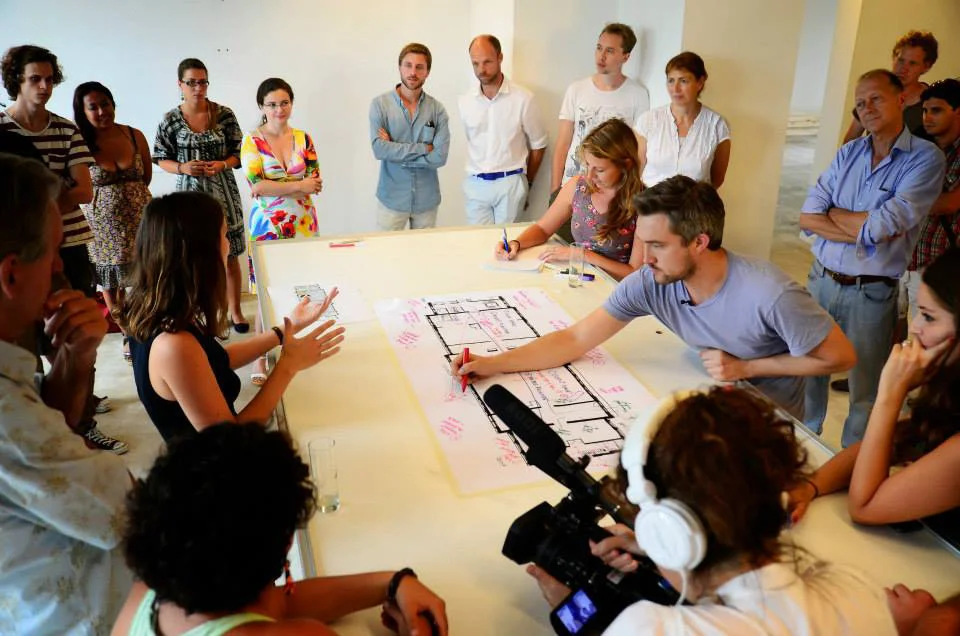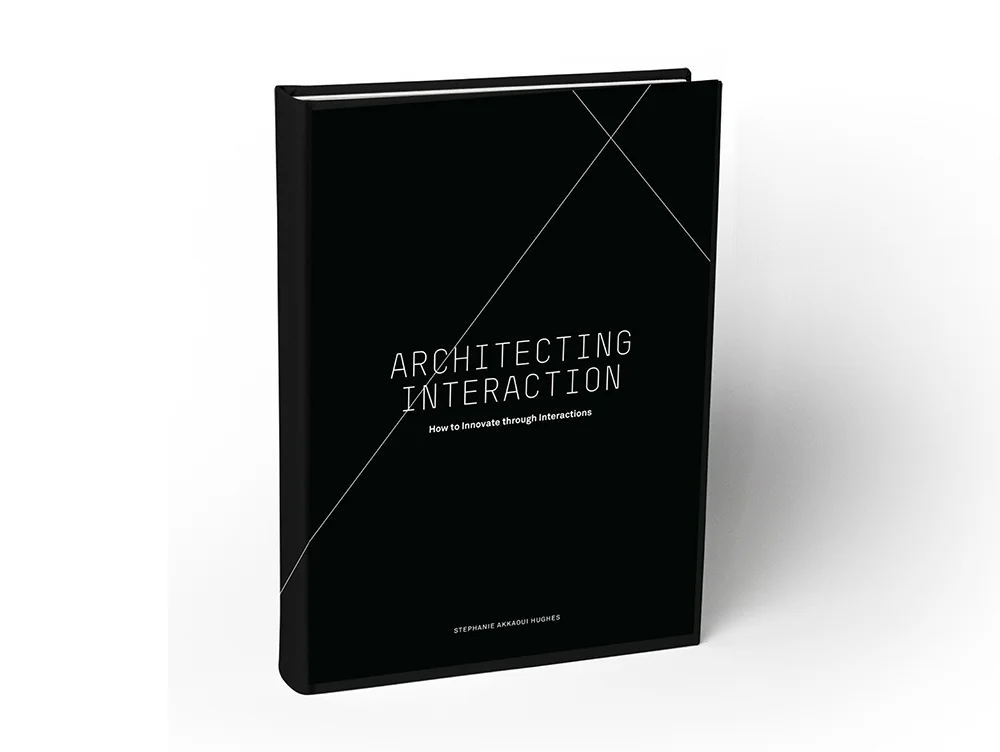Stephanie Hughes On Architecting Interactions, Comprehensive Innovation And Facilitating Positive Change
Founder & CEO of AKKA Architects, Stephanie Akkaoui Hughes is part of a new breed of young visionary architects, who operate beyond the nowadays-restrained realm of architecture.
After 5 years practicing at the Office for Metropolitan Architecture (OMA) with world renowned architect Rem Koolhaas, Stephanie founded AKKA, an architecture and urbanism studio specialised in creating contexts that foster human interactions. AKKA is driven by Stephanie’s vision of Architecting Interaction.
Based on Stephanie’s belief that interactions are the seeds of innovation, Architecting Interaction explores how spaces and contexts can foster human interactions. Stephanie is also an author and speaker. She regularly speaks at conferences, summits & universities worldwide, including TEDx, the International Interaction Conference, the International Business Conference and the Centre for Excellence in Universal Design. Stephanie’s book Architecting Interaction: How to Innovate through Interactions, has just been published.
Stephanie Hughes talks us through key insights into tackling complex problems with comprehensive innovation, she discusses her theory behind architecting interactions & shares some inspirational projects.
HIGHLIGHTS FROM THE INTERVIEW (LISTEN TO THE PODCAST FOR FULL DETAILS)
Could you please share a bit about your background and the key discoveries you made along your journey which led you to founding an architecture firm? [2:07]
I was born and raised in Beirut, Lebanon, which was quite a chaotic place to say the least. When that's your environment you don't really know anything different, so you just deal with it and absorb that. My desire behind studying architecture was the idea of the renaissance man or woman. I was attracted to the idea of this kind of person who was able to practice different things and actually learn from all those different fields, then feed them back into practice. I really chose architecture as a base for other things or to really keep my doors open, as opposed to doing architecture for the sake of specialising into architecture. [Stephanie explains further.] I was really interested in creating something new, something that wasn't there before. [Stephanie talks about her studies and how she wanted to understand a way of thinking before specific materials or tools that could could be learnt on the job. She explains how she joined OMA and learnt an incredible amount on the job with a vast range of projects.]
I always say that I learnt a lot about what to do or what not to do. What not to do simply had to do with my way of looking at things or my own belief about what architecture was. With that came the realisation that that was not the way that I wanted to practice or the way I thought the role of the architect was. There came a time when I was questioning, 'is this is how it is done?' [She explains in further detail how she asked around and got answers she wasn't satisfied with.]
From there came the questions, "what does it mean to be an architect, what is my role, where am I bringing value." There were a lot of things happening that made me think it should be something else. I went back to school during my work there. I was looking for something. From all of that search and investigation came the vision that I now call 'architecting interaction'. AKKA is only born as a vehicle for that vision. For me founding a firm for the sake of founding a firm and then having to run after projects to keep it running is a bit beside the point. It was a vision first. An idea about what architecture should be about and where the value was. To make that vision a reality, to apply it in projects or anything I needed a vehicle and that is where AKKA was born.
In the TEDx speech you gave in Belfast, you speak about the segregation, disunity and fragmentation you witnessed while growing up in Lebanon. Can you please share how this shaped your current world views and how it has informed how you practice as an architect? [8:08]
I grew up among many problems. I heard many adults talking about problems. Every time I asked 'what's the problem, or what's the cause of the problem?' you'd get very different answers, which were never clear or to the point. For me, this was a sign that a problem never has one cause. That was my conclusion as a child and even now.
Large global problems that are very prominent these days never have one cause. Which also means that you can never address them or solve them by focussing on one solution.
My response to that was looking at this notion of a holistic approach or thinking, or what I call 'comprehensive innovation'. This desire to look at the full context, or as full as possible.
This is why I think that answers cannot come from one topic or one field, but also not from one party or one expert.
This is where notions such as participation or collaborative processes or gathering insights or looking at different issues in different fields come in. All of those notions have their seed in the belief that it cannot come from one person or field, whatever it is.
In the same TEDx talk, you argue that the root of our global problems today is fragmented thinking, fragmented behaviour and fragmented solutions. The solution you offer to these problems is comprehensive innovation... [10:20]
Yeah, we hear a lot of talk about innovation - even collaboration, co-creation, participation. They are all really big buzzwords at the moment. I really had to define what I meant when I used them. For me innovation is not enough. Because we can innovate in the very restrained limits of one field... I guess it would still be called innovation, but that's not what I'm talking about. For me it's great but not enough.
We are facing global challenges today and there's many reasons why. For me I believe that one of the reasons they have become so prominent is that we haven't addressed them properly or in the right way.
I'm not saying that I have the answer to address them, but I'm experimenting with the approach to how we could start to address them. For me that really has to do with comprehensive innovation. There's two parts in that. We need more than one expert and users, which are the main source of insights and expertise, but you don't normally see them around the table. But also the idea, that it's more than one field and expertise. [Stephanie breaks this down further and how it links to our education system.
Whatever answers we have from before are not working anymore. You see that with companies, corporates, governments, nations... we do the same thing we used to do and somehow it's not working anymore.
We obviously need new ways, new answers, new questions and that notion of new is where innovation is needed.
Stephanie facilitating one of the projects with various stakeholders.
What projects have you been involved in recently which you are particularly proud of? [13:22]
That question made me laugh. We as a team are actually very blessed that we are very proud of every project we've done. That's of course lucky, but we've worked for that.[Stephanie breaks this down further.]
Because AKKA was born based on a vision, our reason for existing as a company is very clear. [Stephanie explains more about the development of the vision and applications of the vision. She also talks about the types of clients she works with and their reasons for wanting to work with AKKA.]
The core of our vision is to foster interactions. That is based on the believe that interactions are the seeds of innovation.
So if you want to talk about any form of innovation, it starts with interactions. As architects, designers, consultants we cannot innovate for you in your field, but we can design your context so that that context helps you do what you want to do better. It applies to offices, museums, public spaces, train stations, private homes, anything you can think of. [Stephanie talks about project examples further and how each project is different. She also talks about the Impact Hub in Amsterdam which they designed.]
Part of our process is to start inhabiting the space before we call it complete. For us it's really educational to really see how people use the space that you thought people were going to use one way or another.
You’ve written a whole book about this whole topic called, ‘Architecting Interaction’, could you please talk us through some of the key arguments in the book? [19:48]
The book is really focussed on the vision. [Stephanie talks about what she goes through in the book and the reservations she had in writing it, as well as how she has developed her processes.]
What are the key changes you have seen in the role of the architect or designer since you first began practicing? [23:00]
I think the traditional way of practicing architecture was probably needed at the certain time that it emerged. I do believe that people do things because they believe there is value in it. However if you go back, even before our modern times, architecture is a relatively new profession. There was a study that demonstrated that all the architects in the world build or work for 1% of the world's population. So that means that 99% of the world's population are doing arguably fine without us. That is a very scary perspective for architects. There has been a process of mystifying the profession and I am not sure it's needed. I think it's a very complex role and I can see why it became mystified. It's complex, but it's not complicated really.
I think the architect is responsible for a number of things in the process, and one of the things is bringing the parties together and outlining the vision.
You can do that by dictating it because you think you know what is best for other people, or you can do it based on insights and the learnings you get from different people concerned with the project you're working on. [Stephanie goes on to explain the mapping process with different stakeholders and the community they work with.]
We don't ask people what they want. We ask people to understand what they want the project to be. [Stephanie explains in detail.]
For the architecture students listening who are perhaps about to start their career, what advice would you give to those who would like to use their profession to create positive social change? [27:29]
It's really about clarifying for yourself what you believe, or what you think, or why you want to be an architect. Studying architecture is not easy. If the answer to the question of 'why do I want to be an architect?' is not a satisfying, proactive, positive answer, basically you shouldn't be an architect. For me the only reason that it is worth it is because of that driver that I found in my own vision. If you believe in that, that's great, but it doesn't have to be a new vision or something that nobody else has, but it has to be something you genuinely believe in. If somebody else has it, join forces.
Exercise and practice and be critical of the way you work, whether it's aligned with what you think or not.
Then there are qualities like listening and actively learning and reflecting on whether what feels right and aligns with your values as a person before anything.
There is no difference between the person and the professional. It is personal, always.
Which particular methods or tools do you use to measure the social impact and interactivity of your projects? [30:11]
We use a four phase process. [Stephanie explains in detail the process they use.]
One of the very first things I did in when developing this vision was take some psychology courses. I suddenly had the realisation that we as architects have no clue about how people think, how people behave. [Stephanie talks about having a basic knowledge of psychology before continuing to talk about AKKA's design process.]
Are there any really inspiring projects you’re aware of from around the world that have successfully used design or architecture to tackle complex social problems and turn them into opportunities? [35:10]
There is a project by an architect called Alejandro Aravena called 'Half a Good House'. [Stephanie talks about the 'brilliance' of this project. She also talks about the aesthetic qualities of a project and how it is really about the people.]
To finish off, could you please recommend 3 great books that you think would inspire our listeners? [38:31]
[Stephanie speaks in detail about the range of books listed below.]
Initiatives, people and resources mentioned in the podcast
Half a Good House by Alejando Aravena
A Pattern Language by Christopher Alexander
Happy City by Charles Montgomery
Recoded City by Thomas Ermacora and Lucy Bullivant










